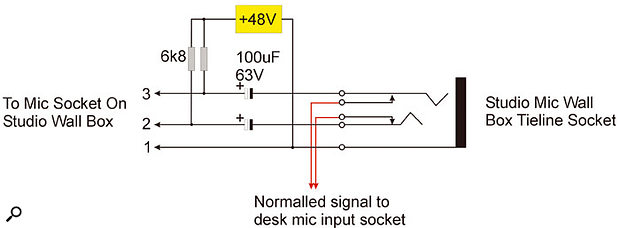I recently bought a patchbay from an auction of old gear cleared from BBC Pebble Mill. In the back of the patchbay, there are a number of what look like hand-drawn PCBs, on which a series of resistors and capacitors are mounted, as well as an input at one end for an unspecified voltage. I once saw something similar on the patchbay in an old Soundcraft desk, although the guy who owned it said he had no idea what it was for! I was wondering if you had ever come across this, and if you know what it is used for.
Tim Southorn
Technical Editor (and ex-BBC engineer) Hugh Robjohns replies: It's a phantom powering/blocking circuit. Most BBC installations are designed so that the phantom power is supplied directly to mics, downstream of the patchbay, rather than from the desk. Essentially, this means that mics can be patched using B-type jack-plugs without having to worry about phantom power splatting around and blowing things up when they're plugged in.
These systems also have DC blocking to prevent the 48V phantom power supply, intended for the mic sockets in the studio, from reaching the patchbay terminals and normalising switch contacts that would connect eventually to the mixer or preamp input stages.
On your PCBs, I would expect the wall-box end of the cable coming into the jacks to have 6.8kΩ resistors on each leg, connected at the other end to the common +48V supply rail (as shown in the circuit diagram, above). There should then be capacitors in series with each leg feeding onto the jack contacts, to provide DC isolation and prevent the phantom power from reaching the socket.
Phantom On Patchbays
The circuit diagram above shows a very simple solution — that's used extensively by the BBC — to the 'phantom on patchbay' problem. Phantom power is applied directly to the wall-box mic tie-line (via closely matched 6.8kΩ resistors) in the usual way. Large-value capacitors prevent the DC power reaching the patchbay socket contacts, but the capacitor voltage rating must be sufficient to withstand the maximum phantom power voltage, and their value high enough to avoid unwanted LF roll-off in concert with the mic preamp's input circuitry.

